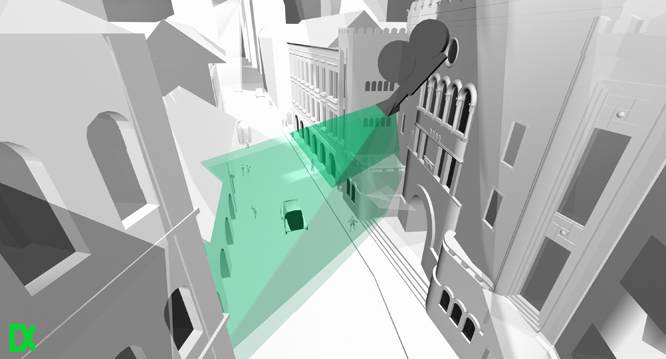|
|
|
The project concentrates on the part of the filmmaking process that plays the key role in turning a story committed to paper into a motion picture, to realize the internal pictures of our fantasy responding to a particular story. This process is called preproduction. This is a strange gate that lets written information through and transforms them into pictures, visual projection, but not with the intention to illustrate a story, but to allow the created visual information to grow into movement, moving image narrative. Thus this process involves written interpretation, atmospheric outline, visual, illustrative and plot orientated translation as well as the shaping into motion of the story. The aim of the project is to develop an interactive – in this particular case – software interface that makes the different phases of preproduction traceable, shot by shot, from concept design to architectural drawings, from storyboards to edited animatics. Consequently the work is an interactive skeleton, which we can dress accordingly to the depth of the scene. The finished software would allow the handling, pasting, editing and systematization of the commonly used image and movie file formats. At the current stage the project is a prototype, a theoretical system to test the applicability and market demand. Of course, softwares helping the process of preproduction have too been developed in the past. But this version offers – as opposed to the available softwares on the market, which allow the user to create and coordinate the different implementation sections of preproduction – to make the different work phases coordinated and compassable. Accordingly the interactive simulation makes an attempt to synchronise the early phases of film production. Hopefully a similar system can give the filmmakers a broader view to organise and review the actual film more easily.
|
Film is a rhythm, a complex of visual sequences, an audiovisual work expanded with the dimension of time that wants to relate the story from the most optimal perspective of both space and time. A feature certainly is above all about the story, a represented plot progression or change of condition. This is not a novelty. But a feature cannot be built around individual thoughts of particular co-creators; it has to emerge from independent visions of accentuated creators. Once the thought that should be expressed and the story that can convey it is available to us, our task is to synchronise the fictitious visual sequences, sounds, colours and rhythms that exist in the minds of the creators. The process can be compared to the functioning of an orchestra. The conductor synchronises the processes laid down by the composer. The conductor defines – or overwrites if appropriate – the units, which make the performance and values of a composition unique and weighted. The method that leads to the performance of a symphonic piece is easily perspicuous. The elementary units and melodies are clearly laid down for the performers, but time and intensity are not. Each performer comprehends the length of a beat, the measure of dynamics, forte and piano and even the piece itself a bit differently. A violinist playing his part does not necessarily understands his role in the whole, he does not necessarily know whether his part has an emphasising, an underpainting or narrative function at a specific moment. The conductor is in charge of harmonising the different musical intentions. However it is inevitable that each member of the orchestra speaks the same musical language, thus everyone is familiar with the processes laid down in the score. Now let us imagine an orchestra that only hears the other parts on the day of the concert, where at least a dozen scores written in different languages and covering distinctive aspects are circulating in the room. One score documents the dynamics only, another one the musical narrative, the third one the number of instruments, the fourth one the length of a beat, etc. These visual score fragments in the film industry are the script elements, like moodboards, concept designs, storyboards, technical scripts, architectural drawings, etc
|
|
Obviously there is not always the need for a score that is documented and planned to the extremes. The necessary phases of preproduction have to be determined accordingly to the particular sequences. However, to build these phases upon concordance the director, the producer, the scriptwriter, the cinematographer, the concept designer and in some cases even the executors have to cooperate during preproduction. Nevertheless, the completed audiovisual materials should not absolutely determine the film that is going to be shot. The individual units – both regarding scenes or shots – are recommendations, possible solutions and not finalized scale-models, which simply need to be blown up or painted. To emphasize that is very important, since preproduction should not be the subject of a conflict between the director and the cinematographer, the scriptwriter and the producer, etc. The adequate preproduction for each role should be regarded as assistance and not as a laid down routine; an assistance that can even moderate the tension and solve problems of communication between the co-creators.
|
|
| more elements of the software | |
| 'brave new world project' | kamen anev copyright 2010 |
